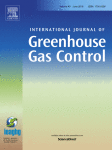 Authors: Jia-Lin KANG, David Shan-Hill WONG, Shi-Shang JANG, Chung-Sung TAN
Authors: Jia-Lin KANG, David Shan-Hill WONG, Shi-Shang JANG, Chung-Sung TAN
Affiliation: Department of Chemical Engineering, National Tsing Hua University, Hsinchu 30013, Taiwan, ROC
Reference: International Journal of Greenhouse Gas Control, 46 (2016) 228–239
Abstract: “In this work, a model for the absorption of carbon dioxide using 3 wt% dilute aqueous ammonia solution in rotating packed bed and packed bed was developed and validated using experimental data. The model was then employed to design absorbers for different throughput rates, ranging from 0.01 to 1000 ton-CO2-capture/day…”
DOI: 10.1016/j.ijggc.2016.01.017
Comments: in section 2.4 of their paper, the authors indicate how the model was implemented. “Both the PB and the RPB models were implemented using the gPROMS platform. Physical properties, which were taken from Aspen Properties, were introduced through CAPE-OPEN Thermo interface to connect to gPROMS.”. Here PB stands for packed bed and RFB for rotating packed bed. The authors further detail what was transferred through the CAPE-OPEN interface between Aspen Properties and gPROMS: “Thermodynamic properties of the gas and liquid phases, e.g.,densities, viscosities, and surface tensions, were obtained from the Aspen Properties database using the electrolyte non-random-two-liquid (electrolyte NRTL) model for the MEA and the dilute aqueous ammonia solutions.”. While it appears that just a few properties had to be calculated by Aspen Properties and transferred to gPROMS, this study relies on the CAPE-OPEN technology provided by both gPROMS and Aspen Properties.
